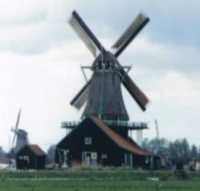When To Travel Europe
~
A Guide To Travel Seasons
Seasoned travelers base their decision for when to travel Europe on two things:
- research of the potential European destinations they're interested in visiting, and
- how the season they're considering for travel will affect their time in Europe.
The result?
Experienced travelers frequently choose the laid back ambience of Europe off season as their favorite time to travel.
Cost-conscious travelers routinely ignore the challenges of off season weather, relishing instead the free-dom and intimate appeal of travel-ing in Europe outside of the peak travel seasons.
Growing numbers of repeat trav-elers feel shoulder season is the very best time to visit Europe, with milder weather and smaller crowds than the other, more popular seasons.
While truly die-hard travelers throw caution to the wind and choose to visit Europe in winter months, when costs are the absolute lowest and the soul of Europe is alive for all who live and visit there.
First time Euro-travelers usually consider the summer peak season for travel anywhere on the Continent, especially when doing Europe 'on their own'.
Despite the larger crowds, higher costs, and congested attractions, they seldom focus on any season but peak season, as the only time to visit Europe.

But for all European travelers - novice and seasoned alike - beyond choosing where to go, how long to stay, and how much to spend, it's imperative to under-stand how the different travel seasons affect your trip.
Being aware of the impact travel seasons have, can simplify your decision for when to travel and help you choose the best time for you to visit Europe.
Whichever season you choose, travel in all of Europe is impacted in large and small ways, and not only by the temperature.
The time of year is also a factor in the kind of Europe you'll experience.
The type of weather, the number of tourists, the amount of daylight hours, local holidays and seasonal festivities, along with major sporting events, all combine to determine the kind of trip you have.
For a truly successful trip, it's essential to strike a balance between the size of your travel budget and the physical comforts you require, when choosing the best season to travel Europe.
How Travel Seasons Differ
Whether you prefer the heat of summer, the chill of winter, or something in between, you can plan your Europe itinerary to take advantage of the season.
If it's warmer weather you want with maximum daytime hours, and you don’t mind throngs of tourists and steeper prices, then peak season is your choice for when to travel Europe.
Except for Ski Season, the warm summer travel season is, by far, the most popular time to visit anywhere on the Continent.
Attractions are open, sights are fresh and welcoming, hoteliers and restaurant-eurs vie for your business and your travel dollars.
But if you're into cozy winter evenings, a more European Europe, and the height of Europe's cultural season, then low season, [off-peak] is your best time to visit Europe.
Except for ski destinations and the weeks surrounding Christmas and New Years, winter's off season in Europe is slow, quiet, and a decidedly better bargain.
It's the best time of year for seeing the things you came to see, at a much more comfortable price and pace.
And if you want to meld together the best of both seasons, your choice for when to travel anywhere in Europe is in-between the summer highs and winter lows, also known as shoulder season.

Temperatures in the southern countries [near or around the Mediterranean] have moderated, yet it's seasonly mild in more northerly desti-nations.
You can choose an area to visit knowing the weather is mild and comfortable throughout most of Europe - and the hordes of summer tourists have gone.
From Keukenhof and the tulip fields of Holland in spring, to Oktoberfest and the Scottish Highland Games in fall, the European off peak season is on display in a celebration of themselves.
Savvy travelers the world over have come to learn this is the best season to travel in Europe, and they come to share in the festivity.
Help For Choosing When To Travel
Europe's seasonal changes vary by country and also by region in some of the larger countries.
Distances are relatively short, but Europe is geographically diverse, with wildly fluctuating topography, weather, and temperatures.
If you want to pin down the weather beyond the generality of a travel season, check online weather sites to evaluate local climate conditions for the time you plan to travel.
Wunderground.com is an informational online source for checking global weather patterns, including local averages for highs, lows, wind, cloud, and humidity.
You can pinpoint conditions by city, country, or airport code not only for Europe, but around the globe.
Use the dedicated Trip Planner section to help plot weather for the actual dates you plan to travel for stays up to two weeks.
For skiers heading to Europe, you can check conditions at hundreds of slopes. Just pick your country, and you can retrieve current stats on base snow, new snow, trails, lifts, and surface conditions.
Another thermal site for weather checking and local conditions anywhere in the world is Weather2travel.com.

This site offers interactive guides and statistics on everything from average daily temps and rain-fall, to hours of daylight, UV indexes, even ocean tempera-tures, if your travel plans include a trip to the beach.
Choose your destination, then use the site's 'when to travel' link to find the best conditions for your destina-tion.
For most of Continental Europe, weather data generally defaults to the peak travel season months as the best weather for traveling throughout Europe.
But a few simple calculations may convince you other travel seasons offer equally attractive weather conditions and perhaps a better time to travel.
Try creating a graph of personal weather parameters, using averages for sun, rain, temperatures, and humidity that will be tolerable for you to travel. Then, using one of the sites above, compare it to seasonal temps throughout Europe to find the countries or areas that correspond to your parameters.
And remember, your choice of when to travel Europe will affect more than your physical comfort.
The travel season you choose will affect what you do, what you see, and how much money you spend. It will influence the people you meet and the travel memories you bring home.
The success of your trip to Europe will be determined not only by when you travel, but by the specific benefits each travel season offers.
For more tips and info on when to travel, check the following pages:
Travel In Peak Season is not for the faint of heart. Learn how to deal with the crowds, the costs, and the chaos of the peak travel season.
Travel In Low Season finds a different side of Europe. Toss your weather concerns aside and discover the Continent's true soul.
Travel In Shoulder Season is the best of all travel worlds. Take advantage of Europe's finest travel season.
Travel Tip
Seasonal travel dates vary by airline, tour company, hotel, type of trans-portation, and destination. Once you've decided when to travel, be flexible in your planning, so you can take advantage of seasonal travel benefits for each of your trip components.
Return to Homepage | Return to Top...
Updated Travel Topics
Make Your Packing Easier and your Trip More Organized...

Packing Cubes from eBags

Our Readers Say...
Thanks for providing all these awesome resources for travel addicts on your website! ~ Sally D./Canada
I enjoyed looking through your website, especially the article you've written about yourself and your passion for travel. I share the same passion. ~ Theresa C./US
This is the first time I’ve visited your site, and it's fantastic. I think it's a terrific resource as an all-travel portal. ~ Steven F./US
I’ve been reading your blog, travel-safe-travel-smart.com and found the article 'Use The Best Travel Guides To Plan Your Trip' extremely interesting. ~ Jessica B./US













